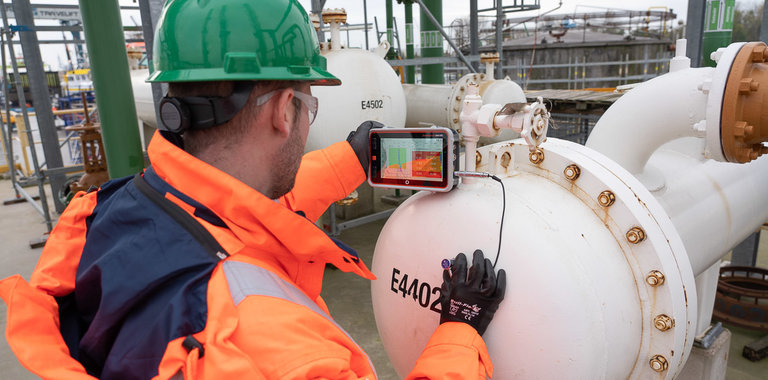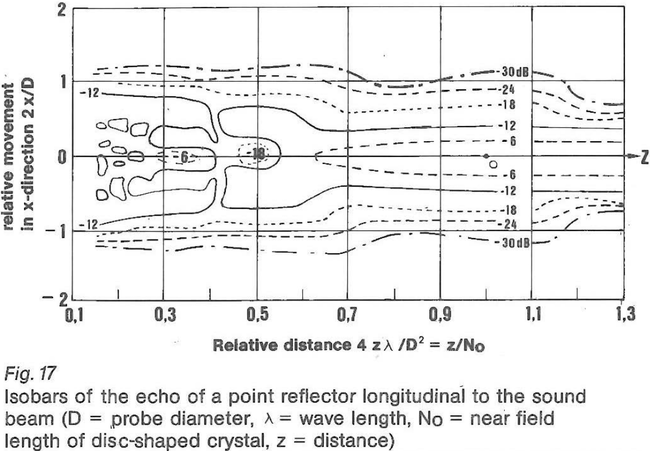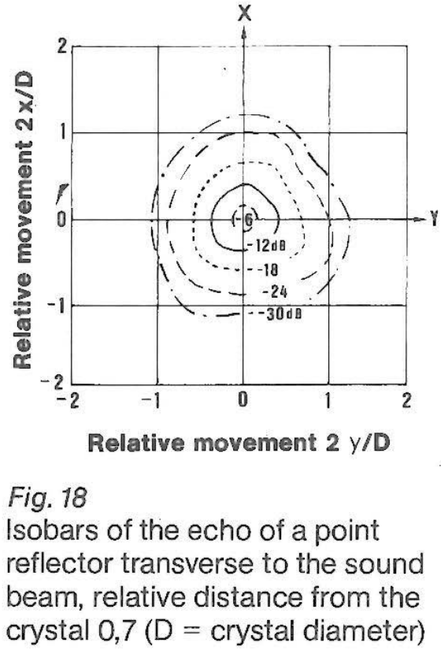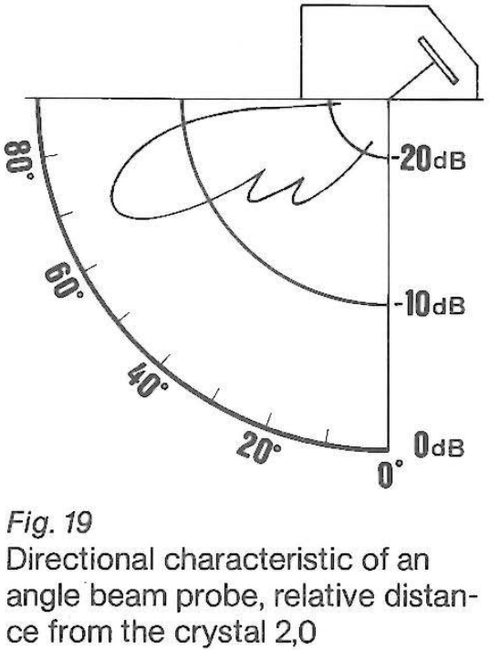
Sound Fields in Ultrasonic Pulse Technique
In this article:
- Sound Fields Represent Spatial Distributions of Pressure: A sound field is defined as the spatial pattern of alternating sound pressure values generated by an ultrasonic pulse, forming a continuous field without physical boundaries.
- Ultrasonic Pulses Create Practically Static Pressure Fields: Although ultrasonic pulses are dynamic, their high repetition rate (up to 10,000 Hz) allows the sound field to be treated as a static distribution of maximum pressure values.
- Isobar Diagrams Visualize Constant Pressure Zones: Sound fields are often illustrated using isobar lines—contours of equal sound pressure—helping visualize beam shape and intensity distribution in cross-sectional views.
- Directional Characteristics Depend on Distance and Geometry: The directional pattern of a sound field varies with distance from the probe and is influenced by the probe’s shape and the medium, affecting flaw detection accuracy.
- Free Field vs. Echo Field Differentiation Is Crucial: Free field measurements describe the unreflected sound field, while echo field characteristics depend on both the probe and the reflector, making them more relevant for pulse-echo ultrasonic testing.
By definition a sound field has no boundaries. A sound pressure amplitude can be correlated to every point in space (could be zero).
The set of values for such a location and sound pressure forms the sound field - or, more accurately, the field of alternating sound pressure.
The ultrasonic pulse technique functions, as the name implies - with ultrasound pulses. These pulses need a certain time, depending upon the sound velocity c and the position of the sound source to form the maximum sound pressure at a specific location. As the sound pressure builds up and decays at the pulse repetition frequency of up to 10,000 times per second one can neglect the time dependency and regard the sound field as if the pressure was constant at each point and equal to the maximum sound pressure there. The dynamic sequence of transmitting and receiving pulses leads to a practically static sound pressure field.
Each sound source has its characteristic type of pressure distribution in space and lt isn't the probe but rather this sound field generated by it which is a means by which interference is detected in the material being tested.
To show a field of sound pressure by means of a diagram one usually marks those lines in a cross section in space where there is a constant sound pressure (isobars) (Fig. 17, 18).
The -6 dB curve means that on this line the pressure is 6 dB below the pressure at the 0 dB position i. e. lt is only half as big as at the 0 dB position.
Contrary to the isobar representation (Fig. 17, 18) where for every sound pressure p the location is also given where lt is present, the directional characteristic (Fig. 19) which is to be measured 0 ä certain distance from the sound source gives only the direction in which this pressure can be measured. The directional characteristic thus can only apply for the distance in which lt has been taken.
The description of a sound field given here is based on the fact that, using a suitable point receiver, the sound pressure in every point in space is measured without interfering with the sound field. Thus it is known as the free field, i. e. a free radiation of the sound source or the free field directional characteristic. lf, however, the sound wave is reflected at a reflector in a certain field point and is received by the same probe one obtains the echo field characteristic in reference to the reflector used. For the pulse-echo-method the free field data is less interesting than the echo fields which however do not only depend upon the probe but deeneflust as much on the reflector used.



